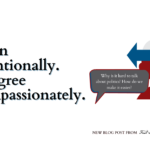 Consumer activism, which refers to citizens influencing how goods and services are produced, marketed and delivered to consumers, has been around for years. However, the instantaneous nature of digital communications has expedited the ability for consumers to rally support for their causes and persuade companies to change how they do business.
Consumer activism, which refers to citizens influencing how goods and services are produced, marketed and delivered to consumers, has been around for years. However, the instantaneous nature of digital communications has expedited the ability for consumers to rally support for their causes and persuade companies to change how they do business.
In other words, consumer activism seeks to change how a good or service is created (especially in regards to ethical and environmental issues) through various means of protest, such as boycotting certain businesses/industries, urging others to stop using a product or service, and spending more money on products/services that are sustainably produced in terms of non-wasteful materials and ethical labor standards.
Just as Citizens United v. FEC found that corporations can assert rights to freedom of speech through monetary means, citizens can also “speak” with their consumption habits and preferences. It’s a fascinating phenomenon that many of us have witnessed yet few have consciously thought about when it comes to its effectiveness and consequences for brands and consumers alike.
To uncover the First Amendment underpinnings involved in consumer activism, let’s explore some present-day examples of it in action:
Modern Examples of Consumer Activism
There are countless examples of consumer activism in the U.S. and abroad, including some of these recent events:
- #DeleteUber (encouraged consumers to delete the ride-sharing app after numerous scandals, such as user data mismanagement and alleged profits from the Trump Administration’s travel ban)
- #DeleteFacebook (encouraging consumers to get rid of their Facebook profiles in wake of controversies like Cambridge Analytica and countless data breaches)
- Blizzard Boycott (gamers fleeing the popular video game company after it censored pro-Hong Kong gamers on its live streams and in its competitions)
- Zara fur ban (the company eliminated all animal fur products from its stores in wake of pro-animal activists’ complaints)
Is Consumer Activism Effective?
Just as early American colonists effectively initiated a revolution with the Boston Tea Party (which involved a boycott of British tea after the government monopolized the tea industry in the thirteen colonies through lowered taxes on British East India Company goods), consumer boycotts are often effective nowadays as well.
As consumers express their demands through their purchasing decisions, companies are forced to adapt to changing preferences in the market. Activists have successfully persuaded numerous companies to adopt more environmentally sustainable manufacturing practices (using more eco-friendly, recyclable materials) and advocated for fairer labor practices and higher wages for workers both in the U.S. and abroad.
Consumer activism isn’t always successful, but it’s nevertheless an important trend that aligns closely with the freedoms of speech and petition outlined in the First Amendment of the Constitution.






Great article. Seems like an ideal great path for an average citizen to make real change.
Let’s not forget how the Montgomery Bus Boycott brought about a reversal of Jim Crow practices after Rosa Parks refused to give up her seat and go to the back of the bus.
Great example! Thank you for commenting. Success stories like Rosa Parks should inspire us all to consider consumer advocacy as a way to #FindOurVoice and exercise other rights like freedom of assembly, even if we are assembling digitally many times.